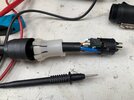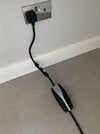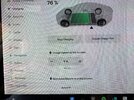NickFie
Member
There may be another safeguard. The Tesla monitors line voltage. If the voltage drops too low, the car reduces charge current. Don’t rely on this, though it could help prevent circuit overload.
I’ve recently noticed our S and 3 engaging in an “Amp dance” with the local utility. The car will ramp up charge current towards the limit I set. If the voltage drops below some threshold, the car backs off. If voltage creeps back up - I believe as the utility feeds more power into the neighborhood transformer - then the car raises its draw a few more Amps.
The power transformer is buried in my next-door neighbor’s yard. Our house has 200 Amp service. Charging has a dedicated 100 Amp circuit. Two second-generation Tesla HPWCs cooperate to allow up to 80 Amps total charge rate. The 2017 Model S can pull up to 72 Amps.
We had the only EVs in the neighborhood for several years. Now I see three other Tesla driveways.
I’ve recently noticed our S and 3 engaging in an “Amp dance” with the local utility. The car will ramp up charge current towards the limit I set. If the voltage drops below some threshold, the car backs off. If voltage creeps back up - I believe as the utility feeds more power into the neighborhood transformer - then the car raises its draw a few more Amps.
The power transformer is buried in my next-door neighbor’s yard. Our house has 200 Amp service. Charging has a dedicated 100 Amp circuit. Two second-generation Tesla HPWCs cooperate to allow up to 80 Amps total charge rate. The 2017 Model S can pull up to 72 Amps.
We had the only EVs in the neighborhood for several years. Now I see three other Tesla driveways.





